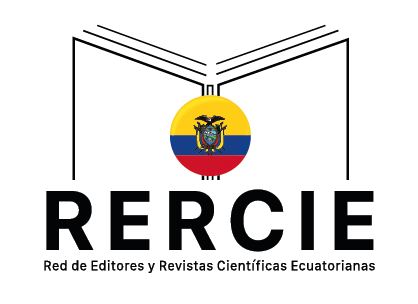Envíos
La revista no acepta envíos en este momento.
Lista de comprobación para la preparación de envíos
Todos los envíos deben cumplir los siguientes requisitos.
- El envío no ha sido publicado previamente ni se ha sometido a consideración por ninguna otra revista en el momento del envío a Revista San Gregorio.
- El archivo de envío está en formato Microsoft Word
- Siempre que sea posible, se proporcionan los identificadores DOI o en coaso de no contener direcciones URL para las referencias.
- El texto tiene interlineado 1.5; 12 puntos de tamaño de fuente; se utiliza cursiva en lugar de subrayado (excepto en las direcciones URL); todas las figuras y tablas se encuentran colocadas en los lugares del texto apropiados.
- El texto se adhiere a los requisitos estilísticos y bibliográficos resumidos en las Directrices del autor/a, que aparecen en "Acerca de" de la revista.
- Si se envía a una sección evaluada por pares de la revista, deben seguirse las instrucciones en Asegurar una evaluación anónima.
- No existen controversias entre autores en artículos escritos en co-autorías. En casos de autoría múltiple (4 autores o más) se envía un documento firmado por todos los autores a revista@sangregorio.edu.ec informando de la pertinencia de incluir a cada uno de ellos en el artículo en base a su participación en el mismo.
- El texto enviado para evaluación se ajusta a las normas para autores, así como a la Política Editorial de la Revista San Gregorio.
- Las citas en el texto se corresponden con las referencias según el estilo APA 7ª edición. Dichas referencias provienen en su mayoría (al menos 15) de fuentes académicas depositadas en repositorios e indexadores de impacto (Catálogo Latindex o superiores), en lo posible actuales (últimos 5 años).
- El apartado dedicado a metodología tiene posibilidad de ser replicado por otro investigador, siempre cuidando las normas éticas a las que se acoge la revista, en caso de leerse de forma aislada.
- El artículo contiene 3-6 palabras (o grupos de palabras) clave que corresponden a alguna de las categorías consideradas en los Tesauros de la Unesco: http://vocabularies.unesco.org/browser/thesaurus/es/
- El texto contiene los siguientes elementos obligatorios: - Título (español) - Title (inglés) - Resumen (español) - Palabras clave (español) - Abstract (inglés) - Keywords (inglés) - Referencias bibliográficas. Sin enumerar ni caracteres especiales. Se debe dejar una línea intermedia entre cada referencia en la versión de referencias subida a la plataforma.
- El autor debe enviar un CERTIFICADO DE ORIGINALIDAD firmado y escaneado a la dirección de la revista (revista@sangregorio.edu.ec) al mismo momento que suba el artículo a la plataforma de la revista. [Puede encontrar dicho modelo de certificado en la sección Acerca de en la plataforma]
- El autor debe firmar un CERTIFICADO DE CESIÓN DE DERECHOS firmado y escaneado a la dirección de la revista (revista@sangregorio.edu.ec) en caso de ser aceptado su texto para publicación con el fin de que el mismo salga publicado. [Puede encontrar dicho modelo de certificado en la sección Acerca de de la plataforma]
Aviso de derechos de autor/a
Esta obra está bajo una Licencia Creative Commons Atribución-NoComercial-SinDerivadas 4.0 Internacional (CC BY-NC-ND 4.0).
Declaración de privacidad
Los datos y las direcciones de correo electrónico introducidos en esta revista se usarán exclusivamente para los fines establecidos en ella y no se proporcionarán a terceros o para su uso con otros fines.















